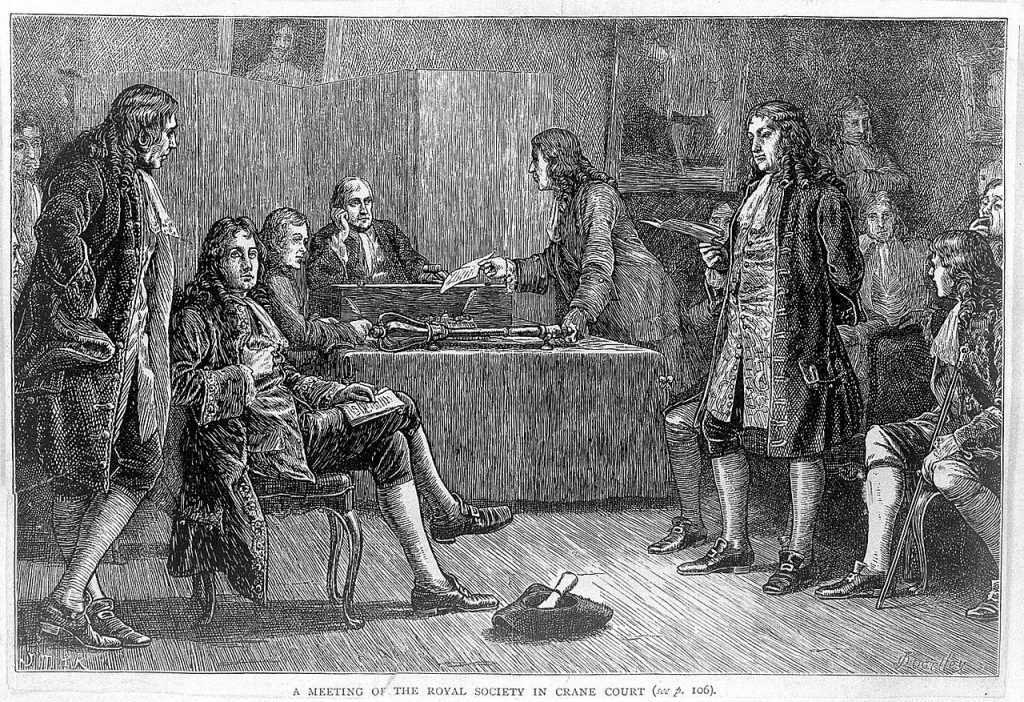A previous post about Innovation during COVID-19 cited Washington Post Staff Writer, Gillian Brockell’s blog post about Isaac Newton’s innovation during the 1665 Black Plague when he socially distanced at his family’s estate 60 miles northwest of Cambridge. Newton’s quiet time at home gave him the space to think and, among other things, develop early calculus and get started with optics. Despite his preternatural abilities, Newton was gifted with some unique advantages that may not have paved his path, but at least removed some large obstacles before him.
Newton (1642 – 1726) was lucky enough to follow on the heels of some illustrious near-contemporaries (in order of birth, not influence on Newton):
- Nicolaus Copernicus – (1473 – 1543) Polish astronomer who proposed that the planets have the Sun as the fixed point to which their motions are to be referred. He posited that Earth is a planet which, besides orbiting the Sun annually, also turns once daily on its own axis. He reasoned that very slow, long-term changes in the direction of this axis account for the precession of the equinoxes.
- Tycho Brahe – (1546 – 1601) Danish alchemist, astrologer, astronomer, supporter of the geocentric (Earth-centered) theory of the Solar System. He designed and constructed astronomical instruments. He made accurate observations of planetary positions which would eventually prove useful to those who followed him.
- Galileo Galilei – (1564 – 1642) Italian astronomer, physicist, and engineer. Galileo has been called the “father of observational astronomy”, the “father of modern physics”, the “father of the scientific method”, and the “father of modern science”. That’s a lot of fathering.
- Johannes Kepler (1571 – 1630) German astronomer, mathematician, and astrologer. He is a key figure in the 17th-century scientific revolution, best known for his laws of planetary motion.
- René Descartes – (1596 – 1650) French mathematician, scientist, and philosopher, best known for the phrase, “I think, therefore I am.” He bridged the gap between algebra and geometry, which resulted in the Cartesian coordinate system.
If Newton was a slacker, he would have spent his time in isolation snickering over the salacious details of his dog-eared copy of Romeo and Juliet (Shakespeare – 1564-1616). But, Newton was no slouch. Newton developed the principles of modern physics, including the laws of motion. Would he have become one of the great minds of the 17th-century Scientific Revolution without the influence of his distinguished predecessors? Probably not.
The biggest reason that Newton was able to leap forward so profoundly is because he had the raw ingredients sprouting up around him and beneath his feet to animate such a jump. Despite his isolation, his leap forward came from a deep collaboration unlike any seen before. He said it himself, “I’ve seen farther only by standing on the shoulders of giants.” It wasn’t a face-to-face collaboration, but it was nonetheless a deep collaboration. He “listened” very closely to what Kepler had already put on the table. He carefully considered Brahe’s work. He learned deeply from Galileo. He commingled all the ideas, hypotheses, and data that all of these giants put forth, and from that stew he produced his shattering masterpiece, Principia Mathematica. His productivity exceeded that of any of his predecessors because he had something that his forerunners lacked. Newton began with a canvas speckled with a palette of paint colors supplied by the intellect of his predecessors. With this as a base, he was able to unleash his creativity and genius to rearrange and augment the work, painting his own masterpiece.
It takes enormous energy, concentration, and trial-and-error to figure out which combinations of predecessor ideas will bear fruit and the precise way in which those ideas should be combined to produce a new, valuable idea. Newton constructed a mathematical study of continuous change (Calculus) to produce progeny from the intellectual genes supplied by Brahe, Kepler, Galileo, Copernicus, and Descartes. Interestingly but unsurprisingly, Newton didn’t publish the Principia until he was 47, ancient by academic standards. In the unfathomably scientifically fertile period of the 17th century, it took Newton over half his long life to build the tools he needed to assimilate the thinking that preceded him.
The image of a lone genius sitting in isolation, producing a seminal work is as unrealistic as it is romantic. Human thoughts require a greenhouse where they can accumulate, commingle, and cross-pollinate. This is where the human capacity to organize and collaborate reigns supreme. Shortly before Newton put forth the Principia, a greenhouse of collaboration and idea exchange was founded – the Royal Society of London. Although the Royal Society is an especially successful example, fostering the Industrial Revolution (1760-1840), the organization of luminaries began as early as the 4th Century BCE with Plato’s Academy, and continues to this day with Meetup Groups and professional societies.

Although the depiction above of the Royal Society most closely resembles an Agile Daily Standup meeting, modern technology has facilitated easy collaboration between colleagues in far-flung locations. The innate ability of humans to gain energy from teamwork has spawned platforms like Github, online communities like Kaggle, and movements like open-source software. As tools continue to improve the accretion and organization of ideas, scientists, engineers, and other creatives will face less friction in their ability to assimilate and germinate new ideas. These enhanced mechanisms of collaboration will drive a fervent of productivity in many disciplines and enable learned communities rather than individual contributors to tackle the myriad challenges faced by this planet.
